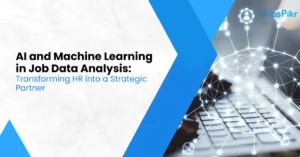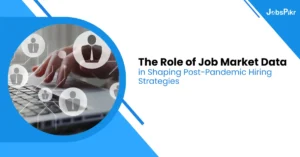The technology that started with discovering patterns in emails to block spam, is now getting used in everything from cancer detection, wildfire prediction, to the field of recruitment. While certain uses are targeted by most — such as finding the best candidates for a job, candidate screening, and matching jobs with candidates — certain unexpected use-cases have also served with the help of data mining Job Description. With many DaaS (Data-as-a-Service) solutions available in the market, it all boils down to how deep you get into the data, and how much information you can extract from the raw listings.
While few recruitment agencies and job portals are taking complete advantage of the technology they have at hand, it is good to be aware of the possibilities and what you are leaving on the table for your competitors.
1. Finding Keywords in Titles that are Most Responded
You must have heard the quote — “Don’t judge a book by its cover”. The problem is that most of us continue to do so. You may describe a job listing in detail in the description, but unless you list the right keywords in the heading you will not generate the right attention in the talent pool.
Let me describe this with an example. Say an applicant wants to apply to jobs where he can work on Machine Learning. Now the most common job titles for this scenario are “Data Engineer” or “Data Scientist”. In case you end up labeling your listing under “Machine Learning Engineer”, or “AI Engineer”, you may end up getting fewer applicants. That’s expected since job applicants go through hundreds of listings each day and usually shortlist jobs using labels or headings.
To make sure such a problem does not happen with your job listings, it is important to find these niche keywords for every sector. The only way to do this is to web scrape tons of job listings off the web. You will need to scrape multiple websites; starting from ones that cover various sectors, niche-job boards, as well as location-specific job boards. Once the job listings are scraped, you can run an algorithm (such as bag-of-words) to find the most commonly occurring keywords in job titles and headings.
2. Identifying Bottlenecks in the Recruitment Process with the Help of Data Mining Job Description
While job listings can be improved using keywords gathered from data mining, there are multiple issues in the recruitment process itself that causes candidates to drop off. This can range from late intimation to slower response times. But finding the exact reason can be difficult in absence of a candidate feedback mechanism.
The only way to identify such bottlenecks is to save certain data points by yourself. Such as the time gap between shortlisting and the interview, the number of rounds of interviews after which a candidate dropped off, review comments in the interviews.
Once such data points are gathered, you can quantify the major factors and introduce the necessary changes required to better the process. Also, in case your portal itself does the initial screening, you can take care of deficiencies in that process.
3. Computing the Best Set Of Requirements Suitable for a Position
Say you want to hire someone for the position of a DevOps lead. What should his years of experience be? Which programming languages should he be acquainted with? What other tools should he have used in the past? What other good-to-have requirements listed that would benefit your company?
When companies publish job listings for various positions of different departments. These are the details they have a hard time gathering. Also, all of these requirements must be thought of so that one does not end up hiring the wrong person for the job.
While most job boards have used web scraping and data mining Job Description to find median salaries to offer to candidates with different levels of skill set and experience. Some have used the data at hand to mine the requirements listed for specific job titles.
If you can get your hands on a live job feed, like the one provided by our job discovery service JobsPikr. You can easily gather all this information and improve all your job listings, and also recommend these data points to companies who are having a hard time posting well-structured job posts.
4. Figure Out Necessary Perks and Benefits of Data Mining (as an add on to Market Salary Rates)
Having a salary that is comparable to market rates is good, but today many companies offer other perks and benefits such as the ability to work from home as and when required, medical insurance, car allowance, and more. Deciding which perks and benefits to provide to employees, and also what type of work environment to build is important, not just for hiring good candidates but also for making sure that they stay.
All this data can be mined from the job listings. Once you have multiple job posts in a particular sector, you can use your algorithm to find the most commonly offered benefits and recommend companies to offer them to find better candidates. Such information is provided by job boards to companies who want guidance in improving their hiring methodologies.
5. Help Individuals Decode their Position Amongst the Competition
Most of the previous points that we discussed are related to job boards and online job agencies using data mining Job Description in unconventional ways. But this one is specifically for the candidates. Often when someone is applying for a job, they are unaware of what percentage of their skills matches with the job post they are applying to, and what are their chances of shortlisting.
If job boards can use data mining Job Description to provide this information in an easier form, in real-time, then job seekers can find it easier to decide which jobs to apply to. Companies like Linkedin already offer such features as their paid offering. Such add-on features increase job applicants’ efficiency, and companies also have to go through fewer profiles thereby making the process faster.
Data Mining Job Description – Conclusion
While more and more businesses and services move to the internet, it has become a treasure-trove of data. Job scraping has enabled recruitment companies to use this data in different ways. You can use unconventional data sources or mine the existing data and find new patterns and information, to boost your growth.




